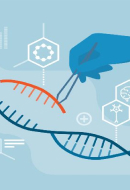What is biosafety
Biosafety: crucial in the fight against pandemics
The SARS-CoV-2 virus and the disease it causes, COVID-19, was one of the greatest threats to humanity in the 21st century. Although the pandemic is now behind us, biosecurity remains essential to prevent health and environmental risks stemming from exposure to disease-causing biological agents.


Biosafety is the name given to the rules and barriers established to prevent biological risk.
The importance of health and prevention has become extremely important in recent years, especially after the impact of the COVID-19 pandemic on our lives. A relevant and interesting issue has aroused the curiosity of public opinion: biosecurity. Below we’ll explain what this concept that plays such a crucial role in protecting against biohazards and preventing future health crises is.
What is biosafety and what is it for
According to the World Health Organisation (WHO), "biosafety is a strategic and integrated approach to analysing and managing relevant risks to human, animal and plant life and health and associated risks for the environment. It is based on recognition of the critical linkages between sectors and the potential for hazards to move within and between sectors, with system-wide consequences".
Since the ultimate aim is to eliminate or minimise biological contamination, there are three important concepts in the field of biosecurity:
-
Biological hazard: is the potential risk of uncontrolled exposure to biological agents with infectious capacity, harming the individual.
-
Biocontainment: are measures used to prevent infectous diseases from leaking from research centres of other places where they may be produced.
-
Bioprotection: is a set of measures taken to reduce the risk of loss, theft, misuse or intentional release of pathogens and toxins, including those governing access to facilities, materials storage and data and publication policies.
Standards and elements of biosafety
Biosafety is a complex discipline which is not devoid of dangers. That is why it is so crucial to have a set of rules and barriers prevent biological hazards derived from exposure to infectious biological agents. Generally speaking, the principles and components of biosecurity can be summarised as follows:

Climate change, biodiversity and human health
Combating climate change and the benefits to biodiversity and health.

SDG 3: Good health and well-being
Our employees’ health is at the forefront of our priorities.

Bioinformatics
What is bioinformatics and what is its impact on health?

Genetic modification
CRISPR: the great genetic revolution.
Biosafety levels in laboratories. Measures and materials
The Center for Disease Control and Prevention (CDC) in the United States classified pathogens into four risk groups in 1974. The World Health Organisation updated the classification, ranking laboratories in terms of the pathogen risk groups with which they work.
- Risk Group 1 (minor individual and community risk)
These agents are very unlikely to cause diseases. BSL 1 laboratories have a basic level of containment based on standard microbiological practices and no primary or secondary barriers are specifically recommended. No safety equipment is required.
- Risk Group 2 (moderate individual risk and low community risk)
Pathogens that are associated with human diseases that are rarely serious and which are unlikely to spread. This also includes any derivative of human blood or tissues in which the presence of infectious agents is not certain. BSL 2 Laboratories have secondary barriers such as hand washing basins and waste decontamination facilities. Protective equipment includes lab coats, gloves and face protection where necessary. Protective clothing should be removed immediately after leaving the laboratory
- Risk Group 3 (high individual risk and low community risk)
Pathogens that tend to cause serious diseases which are not easily transmitted, such as yellow fever, which requires a mosquito bite, or which can be transmitted by the respiratory route. In BSL 3 laboratories, all work is carried out in biosecurity (BSC) cabins or other sealed equipment. Secondary barriers include controlled access to the laboratory and ventilation requirements to minimise the release of infectious aerosols. Protective equipment is similar to risk group 2, but includes respiratory equipment in cases where there is a risk of inhalation infection.
- Risk Group 4 (high individual and community risk)
Agents likely to cause serious human disease which is transmitted easily from person to person, for which there are no efficient preventive measures or effective therapies. Generally speaking, a BSL 4 laboratory is housed in a separate building or in a totally isolated area with waste management systems and specialised ventilation requirements to prevent pathogen leakage. Likewise, to isolate staff from infectious materials in aerosol form, barriers are used to work in a BSC with maximum protection or full body suits, with air supplies and positive pressure.
What are high-risk laboratories and where are they?
BSL 4 laboratories, which work with lethal pathogens, and BSL 3+ laboratories (BSL 3 enhanced laboratories), which work with potentially lethal pathogens, are considered high risk. Let’s see where all of these laboratories are around the world, whether in operation, under construction or planned.
North America
Open / Close- BSL 4 15
- BSL 3+ 19
Europe
Open / Close- BSL 4 26
- BSL 3+ 21
Asia
Open / Close- BSL 4 20
- BSL 3+ 10
South America
Open / Close- BSL 4 1
- BSL 3+ 4
Africa
Open / Close- BSL 4 3
- BSL 3+ 2
Oceania
Open / Close- BSL 4 4
- BSL 3+ 1
Applications of biosafety
Despite having become popular as a result of their fight against SARS-CoV-2, biosafety laboratories are doing more than conducting research into how to contain diseases. Let's look at some other applications of biosecurity:












